
The afternoon was drawing to a close and the chill of early spring was settling over Stratford-upon-Avon as we made our way back towards the car. There were still many things we would have liked to see, but, with the small dog waiting patiently for our return, they would have to wait for another visit. But, there was a church at the end of the street we were crossing and, for some reason, we both felt we ought to take a look. You just never know what you might find and the place, even from a distance, looked as if it might be interesting.

Sketch of New Place by George Vertue 1737
It was certainly in the right part of town. We passed a good many Tudor buildings covered in carvings…and a few Victorian counterfeits too, but we also found the site of William Shakespeare’s house, New Place, right next door to the church. New Place was built in 1483 by Sir Hugh Clopton, and it stayed in the family for eighty years until it was sold to a tenant to raise the marriage portions of that generation of ladies. Shakespeare bought the house in 1597, for the sum of £60, from William Underhill II, a lawyer of the Inner Temple, who was murdered two months later by his son and heir.

Final concord of sale between Underhill and Shakespeare.
Shakespeare died at New Place in 1616 and the house passed to his daughter and then his granddaughter, eventually returning to the Clopton family. In 1702, John Clopton remodelled or rebuilt the house and it eventually became the property of the Reverend Francis Gastrell. Plagued by tourists, even then, in 1756, Gastrell destroyed a mulberry tree in the gardens that was said to have been planted by the Bard himself. There was a public outcry, his windows were smashed, his taxes increased and Gaskell was forced to leave both the house and the town.

New Place Garden. Image: Geograph.org © Copyright Steve Fareham CCL
Nothing now remains of the house itself, though the site has been transformed into a garden that has become a place of pilgrimage for lovers of Shakespeare’s works. Archaeologists have explored the site, finding, amongst other artefacts, the controversial clay pipe containing traces of tobacco, camphor and cannabis, a substance used in the Elizabethan era for clothing, nautical items and for medicinal purposes. The find caused much speculation as to the ownership of the pipe and whether its contents were medicinal or recreational, but in truth, it cannot be specifically dated to the Bard’s occupancy of the house.

The garden was closing as we reached it, and although I know that the upkeep of these historical buildings and sites is extortionately expensive, I found the inscription upon the gate a little ironic, given the hefty entrance fee and the only photo I could get was a brief glimpse over the hedge.

New Place was the second largest property in the town and in a prime position, being right next door to the Guild Chapel and the Guildhall and school Shakespeare is thought to have attended as a boy. This too was closed, but it was still an amazing sight to see the whole street still almost as it was in his day…apart, perhaps, from the paving and tarmac of the streets.

We had seen the place where Shakespeare ended his days, we were looking at the church and Guildhall that abuts the school where he spent his youth. We would pass his birthplace on the way back to the car. A life in reverse, going back in time as we moved forward.

There has been a school at the site since the early thirteenth century and, during Shakespeare’s time, the Grammar School of King Edward VI was the only school around. No records exist to give definitive proof that young William attended the school, but it is probable, given his father’s prominence in the life of the town and the fact that the boy would have been entitled to a free place in the school.

If indeed Shakespeare attended the school, he would have done so from age seven to fourteen and would undoubtedly have attended the chapel next door. I had to wonder if that meant the lad had really enjoyed his childhood and schooling, given that he had chosen to buy the house next door…

The house on Henley Street that is reputed to be his birthplace is only a few minutes walk away and that one is still standing. Although, once again, there is no direct proof that this really was the place he was born, there is ample circumstantial evidence. His father, John Shakespeare, was fined for leaving a pile of muck outside his house in 1552. It is known that he was renting the house at first, then was able to buy it. Although the wattle and daub building looks rather higgledy-piggledy today, it would have been a substantial home at the time and reflects a certain affluence. As the house remained in the family until it passed to William’s daughter, it is almost certain that it was here the Bard was born.

A wattle panel on the front of Shakespeare’s birthplace which would have been covered with the mud-like daub to build the walls.
There is only so much that we can know about any life… even the rich and famous leave only a fragment of themselves to history, and Shakespeare was neither as he grew. His childhood is, for the most part, a mystery, yet as with any artist, much might be gleaned about the private man by reading between the lines of his work.
And this our life, exempt from public haunt,
Finds tongues in trees, books in the running brooks,
Sermons in stones, and good in everything.
~William Shakespeare: As You Like It

As we poked our cameras through the bars of the gate of the house on Henley Street, a red-breasted robin sang from the clipped holly and gentlemen in Elizabethan dress declaimed the words of the Bard. But, before we saw his birthplace, we still had a chapel to visit. Surprisingly, the doors were open and there were the most intriguing carvings on the porch…








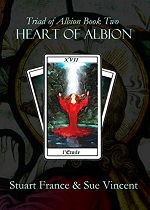






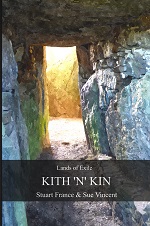
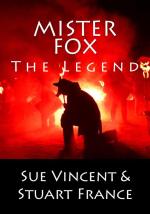

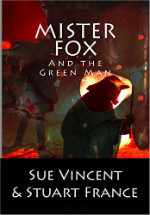
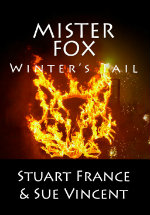


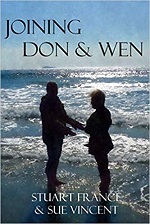

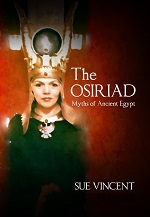










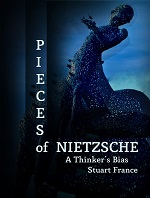
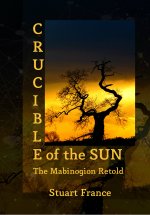


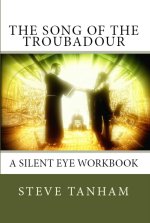


This account of your trip to Stratford Upon Avon is even better than the real thing. All the information, all the detail and no crowds! Thank you Sue I am really enjoying these glimpses. 💜
LikeLiked by 1 person
There was so much more to see than we saw…but we did find wonderful things in the chapel 🙂
LikeLiked by 1 person
I looking for to hearing about that 😉
LikeLiked by 1 person
Later this week 🙂
LikeLiked by 1 person
Good that’s excellent 😀
LikeLiked by 2 people
Reblogged this on anita dawes and jaye marie.
LikeLiked by 1 person
Thanks for sharing, Jaye x
LikeLiked by 2 people
Fascinating, Sue.
LikeLiked by 2 people
Thanks, Mary 🙂
LikeLike
This is fascinating, Sue!
LikeLiked by 2 people
Thanks, Jennie… I’ve been meaning to visit for a long time.The workshop was just the spur needed. 🙂
LikeLiked by 1 person
Sounds perfect! Don’t you love it when these things fall into place? 🙂
LikeLiked by 1 person
Oh yes 🙂
LikeLiked by 1 person
🙂
LikeLiked by 2 people
Reblogged this on Viv Drewa – The Owl Lady.
LikeLiked by 2 people
Thanks for reblogging, Viv xxx
LikeLike
Reblogged this on Die Erste Eslarner Zeitung – Aus und über Eslarn, sowie die bayerisch-tschechische Region!.
LikeLiked by 2 people
Thanks, Michael 🙂
LikeLiked by 1 person
Pingback: A flying visit – A Shakespearean story arc… – The Militant Negro™
Thanks for the reblog 🙂
LikeLike
Loving this Shakespearean tour with you Sue. You’re like Sherlocke Holmes on the case! I await the findings on the carvings. ❤
LikeLiked by 2 people
The carvings were only the beginning, Debby 😉 x
LikeLiked by 2 people
Ooooooh ❤
LikeLike
😉 xx
LikeLiked by 1 person
Pingback: A flying visit – A Shakespearean story arc… | Sue Vincent’s Daily Echo | Rogues & Vagabonds
Reblogged this on charles french words reading and writing and commented:
This is a wonderful post by Sue Vincent about Shakespeare!
LikeLiked by 3 people
Wonderful!
LikeLiked by 1 person
Thank you, Charles.
LikeLike
Sounds like a wonderful wander of a day! Too bad the garden was closing when you got there. But it is funny that they “Bid you Welcome”….. For a hefty sum!
LikeLiked by 2 people
That really tickled me… a lovely inadvertent bit of irony.
LikeLiked by 1 person
A lovely experience in Stratford-upon-Avon, Sue. Our visit to this historical town and our visit to Pashley Gardens were my favourite visits during our last holiday in the UK.
LikeLiked by 2 people
It is rather special, isn’t it?
LikeLiked by 2 people
Thank you for your wonderful posts about Stratford upon Avon. We all went to Stratford in January. I wasn’t keen at first because we had to go into doggy day care, while our people went to see one of those play things. Then we sat in the car while they went to gaze at the stars in the pub you took a photo of and it was v. v. v cold. It was a bit odd because I always thought you had to be outside to look at the stars. The next day though, before we went home, I had the best game of ball ever down by the river, on the other side to the theatre. Did Ani get to play ball there?
You did loads and saw lots of things. My people said thank you for all the ideas for next time they go. They recommend Anne Hathaway’s house if you didn’t get there this time. It has a wonderful garden in the summer.
Bye the bye, did you know that the phrase, ‘caught red handed’, comes from the stain that mulberries leave on your hands? Love Ben xx
LikeLiked by 2 people
No, Ani satyed home this time… some of the places we were going don’t let dogs in 😦
I saw Hathaway’s cottage some years ago, but didn’t get there this time. And I didn’t know the origin of that phrase…so thank you 🙂
LikeLiked by 2 people
Reblogged this on Stuart France.
LikeLiked by 1 person
Once more, what a wonderful way to be on the trip. Although it is coming to me somewhat secondhand, it is more meaningful from all that you are interpreting for us. So much about a life that we don’t know fascinated me and there is so much truth in that. We think we know someone, but what do we really know?
LikeLike